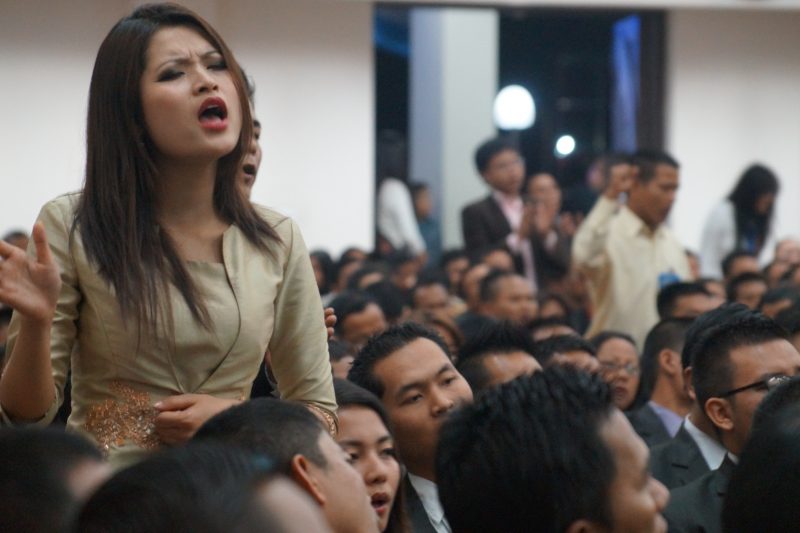I.
The first thing I saw when I landed at Mizoram’s whitewashed bird’s nest of an airport—a concrete block nestled between steep, bamboo-covered hills—was a cross. It stood erect and blazingly white in a shabbily landscaped plot of grass between the terminal and the airport’s lone runway. Bold red letters printed across the patibulum—which, mercifully, I couldn’t make out until I was off the thirty-seat propeller jet and walking across the tarmac—read thy kingdom come.
In Mizoram, it practically has. To the evangelical mind, this wrinkled wedge of land between Bangladesh and Myanmar, occupying about 8,100 square miles1 of landlocked longitudinal ridges, is nothing less than a miracle. Just a century ago, the people living in these rugged hills were a fractured assembly of pagan headhunters; today, Mizoram is one of three majority-Christian states in India, with 87 percent of its inhabitants, including the ethnic minorities living at its social and geographic peripheries, identifying as Christian. Here the idea of God as omnipresent is not conjecture: it’s fact. Every taxi has a rosary dangling from its rearview mirror. Local radio and TV channels play gospel music all day on Sundays, and have separate channels that play only church music all the time. People eat dinner by five thirty to attend church at seven. Every neighborhood in every major town has its own parish church and attendant choir, and every hilltop of every village is crowned by a crucifix.
Mizoram is one of the seven tribal hill states that together constitute what the rest of India knows simply as the Northeast, a region that dangles like an atrophied limb over the hunched back of Bangladesh, nudging Myanmar’s western flank. When young people from the Northeast leave home to work or study in cities like Bangalore and Delhi, they’re often met with racial epithets—chinki is the most common—and occasionally even with lethal violence. Back in February 2015, the Bharatiya Janata Party (the right-wing Hindu nationalist party of India’s current prime minister, Narendra Modi), during its campaign to take over local governance in the capital of New Delhi, included in its Vision Document a call for “protection of the Northeastern migrants,” apparently indifferent to the fact that the Northeast has been part of India since the country’s independence, in 1947.
From 1966 to 1986, a rebel group called the Mizo National Front, now the legitimate ruling party in the state, fought a bitter and violent battle against the Indian government, pushing first for independence, and later for recognition as a semi-autonomous state within the Indian Union. Mizoram has been largely peaceful since the MNF achieved its aims, in 1986, but the wounds of rebellion never fully heal. Even today, the...
You have reached your article limit
Sign up for a digital subscription and continue reading all new issues, plus our entire archives, for just $1.50/month.
Already a subscriber? Sign in





